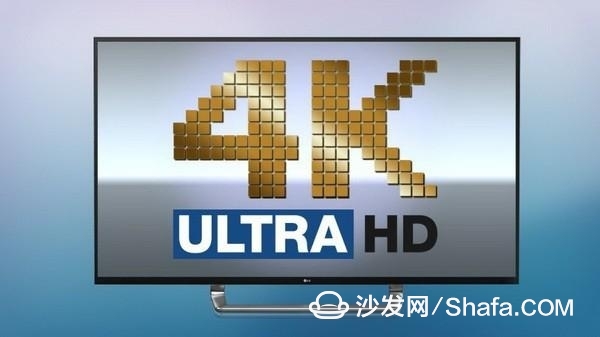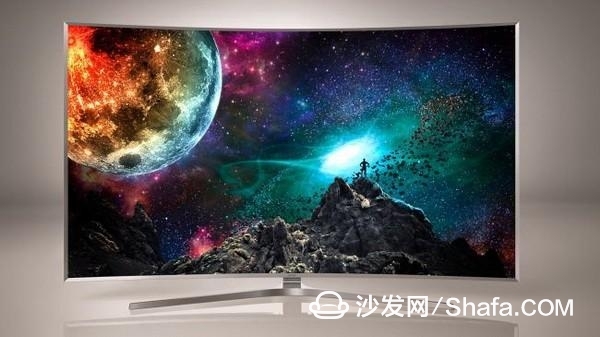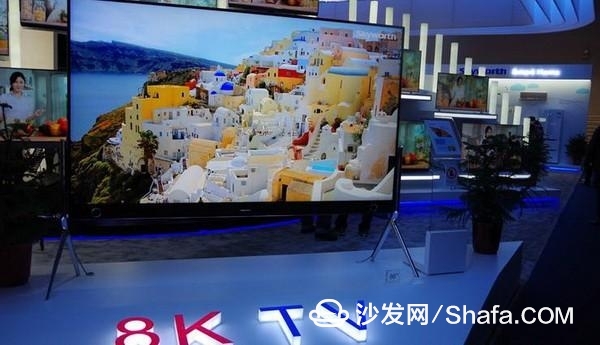Undoubtedly, if you go into a home appliance store and want to purchase a latest TV, you will find that in addition to 4K TV, there are actually not many other options. Obviously, 720P has basically been eliminated, and 1080P has also become the configuration of low-end or small-size TVs. Almost all new high-end flat-panel TVs have 4K resolution.
However, 4K resolution is only a basic attribute. If you want to buy a TV that is suitable for you, you also need to consider a variety of factors. You may wish to refer to the following content.
4K and Ultra HD
Ultra HD currently refers to image resolution standards exceeding 1920×1080 pixels. 4K (40962160 pixels and 38402160 pixels) is naturally included. Of course, 8K also belongs to the Ultra HD category, so Ultra HD is more extensive and 4K is more specific.
In addition, 35 companies such as TV makers Samsung, Toshiba, Sony, Sharp, Panasonic, and content makers Netflix, Fox, etc., have jointly established the UHD alliance, stipulating that devices complying with the 4K standard must have a physical resolution of at least 38,402,160 pixels. The 10-bit color depth can be displayed, which also relates to the HDR 10 standard that we will talk about later.

OLED and quantum dots
As mentioned earlier, 4K has become a mainstream television and imaging standard and is a very basic parameter. Manufacturers only advertised the ultra-high-definition picture quality when 4K TV was first introduced. In-depth development.
The 4K TV type is mainly divided into two types: OLED and LCD panel. This is the same as before the 4K standard was introduced, but both of them have now obtained the resolution evolution. OLED is the main panel type of LG, with self-luminous, high contrast and other characteristics, is the industry's best known quality panel technology, the disadvantage is that the price is expensive, the size of a certain limit.
The LCD, also known as the LCD camp, includes a large number of manufacturers such as Samsung, Sony, Panasonic, Sharp, and Philips, while the quantum dots are a more advanced panel backlight technology, replacing LED phosphors with more superior quantum dot crystals. Backlight, improve LCD color cast. But then again, QD TV is still a LCD TV, not a brand new display panel technology.

What is HDR?
Today, TV manufacturers have started to stir up the concept of "HDR TV", which has caused consumers to be confused. HDR, which is simply a high dynamic range image enhancement technology, currently includes both Dolby Vision and HDR 10 standards. They have certain requirements for the hardware of the TV, specifying at least 1000 nits (LCD) and 540 nits ( OLED brightness panel meets the standard, and it also needs to display at least 10-bit color depth.
In other words, QDs and OLED TVs can all be HDR TVs as long as their panel brightness is up to standard and the software supports certain HDR standards. Currently, high-end TV products from Samsung, Sony, and other vendors all support the HDR 10 standard, which means that they can support HDR 10 standard online video, Blu-ray discs, etc. HDR 10-chip sources will be clearly marked and the effect will be more prominent.

In short, if you are pursuing the ultimate in picture quality, OLED 4K TVs that currently support HDR will be the best choice; of course, HDR's 4K quantum dots will also have excellent results, but the prices of both TVs are very expensive.
Interface issues
One easily overlooked issue is the interface. At present, mainstream 4K TVs are equipped with HDMI 1.4 standard interface, which can achieve 4K/30fps screen input. But if you want to buy HDR TV, or want to use 4K TV as a game monitor, it is best to choose the HDMI 2.0 interface model. HDMI 2.0 can achieve 60fps picture, while HDMI 2.0A is the necessary standard of HDR function.
4K resources and content
Although 4K hardware has begun to become the mainstream, and there is a trend of popularity, 4K content is relatively scarce. At present, some foreign video service providers such as Netflix and Amazon have relatively rich 4K streaming media resources, including some home-made dramas and movies. Sony's 4K Blu-ray standard is also about to enter the market. From the perspective of future trends, the comprehensive transformation of 4K content is inevitable, but it will still take some time. As for China, most of the popular TV shows and variety shows still maintain the 1080P standard, and 4K TV stations have few signals.

The best viewing distance for 4K TV
With regard to the viewing distance of 4K television, in fact, there have been many discussions. The mainstream view is that within the range of human eye strength, in order to really enjoy the clear details brought by 4K resolution, the viewing distance actually needs to be very close. Taking the mainstream size of 55 inches as an example, the difference between 4K and 1080P picture quality needs to be seen at a distance of 0.7 meters, and it is 1.2 meters for 65 inches. Obviously this standard is too close to most users. Buying a larger-sized TV can distinguish between 4K and 1080P at farther viewing distances, but the price is too high.
Although this is theoretically true, the reality is that if you want to buy a television with modern features, 4K resolution is already the most basic, because high-end OLEDs, quantum dots, HDR TVs will not choose 1080P panels at all. So, if the conditions permit, try to choose the larger 4K TV.
8K TV is the future trend
4K is on the way to popularity, 8K TV has come out of spoil. However, your 4K TV can still be used for many years. At present, 8K TVs are only launched by a small number of manufacturers such as Sharp, and the size is an exaggeration of 84 inches. There is obviously no such a large living room for ordinary consumers to place it. Secondly, 8K content is only actively promoted by a Japanese NHK TV station and promises to use 8K signal broadcast during the 2020 Winter Olympics. However, according to current developments, 8K TVs will still be targeted at niche products in the commercial sector.

summary
Although 4K broadcast TV, streaming media and disc content are still under development, 4K games need to wait for a while, but to be sure, 4K TV has finally become valuable, not just a gimmick. If you want to buy a 4K TV, you may wish to refer to the above information and choose the one that suits you best.
However, 4K resolution is only a basic attribute. If you want to buy a TV that is suitable for you, you also need to consider a variety of factors. You may wish to refer to the following content.
4K and Ultra HD
Ultra HD currently refers to image resolution standards exceeding 1920×1080 pixels. 4K (40962160 pixels and 38402160 pixels) is naturally included. Of course, 8K also belongs to the Ultra HD category, so Ultra HD is more extensive and 4K is more specific.
In addition, 35 companies such as TV makers Samsung, Toshiba, Sony, Sharp, Panasonic, and content makers Netflix, Fox, etc., have jointly established the UHD alliance, stipulating that devices complying with the 4K standard must have a physical resolution of at least 38,402,160 pixels. The 10-bit color depth can be displayed, which also relates to the HDR 10 standard that we will talk about later.

As mentioned earlier, 4K has become a mainstream television and imaging standard and is a very basic parameter. Manufacturers only advertised the ultra-high-definition picture quality when 4K TV was first introduced. In-depth development.
The 4K TV type is mainly divided into two types: OLED and LCD panel. This is the same as before the 4K standard was introduced, but both of them have now obtained the resolution evolution. OLED is the main panel type of LG, with self-luminous, high contrast and other characteristics, is the industry's best known quality panel technology, the disadvantage is that the price is expensive, the size of a certain limit.
The LCD, also known as the LCD camp, includes a large number of manufacturers such as Samsung, Sony, Panasonic, Sharp, and Philips, while the quantum dots are a more advanced panel backlight technology, replacing LED phosphors with more superior quantum dot crystals. Backlight, improve LCD color cast. But then again, QD TV is still a LCD TV, not a brand new display panel technology.

Today, TV manufacturers have started to stir up the concept of "HDR TV", which has caused consumers to be confused. HDR, which is simply a high dynamic range image enhancement technology, currently includes both Dolby Vision and HDR 10 standards. They have certain requirements for the hardware of the TV, specifying at least 1000 nits (LCD) and 540 nits ( OLED brightness panel meets the standard, and it also needs to display at least 10-bit color depth.
In other words, QDs and OLED TVs can all be HDR TVs as long as their panel brightness is up to standard and the software supports certain HDR standards. Currently, high-end TV products from Samsung, Sony, and other vendors all support the HDR 10 standard, which means that they can support HDR 10 standard online video, Blu-ray discs, etc. HDR 10-chip sources will be clearly marked and the effect will be more prominent.

Interface issues
One easily overlooked issue is the interface. At present, mainstream 4K TVs are equipped with HDMI 1.4 standard interface, which can achieve 4K/30fps screen input. But if you want to buy HDR TV, or want to use 4K TV as a game monitor, it is best to choose the HDMI 2.0 interface model. HDMI 2.0 can achieve 60fps picture, while HDMI 2.0A is the necessary standard of HDR function.
4K resources and content
Although 4K hardware has begun to become the mainstream, and there is a trend of popularity, 4K content is relatively scarce. At present, some foreign video service providers such as Netflix and Amazon have relatively rich 4K streaming media resources, including some home-made dramas and movies. Sony's 4K Blu-ray standard is also about to enter the market. From the perspective of future trends, the comprehensive transformation of 4K content is inevitable, but it will still take some time. As for China, most of the popular TV shows and variety shows still maintain the 1080P standard, and 4K TV stations have few signals.

In terms of games, PC-based 4K games have become very popular. NVIDIA introduced a series of high-end graphics cards such as the GTX 1070/1080 this year. The single-card 4K performance has been very strong, and SLI can achieve smooth high-frame rate 4K screens. In terms of game consoles, the Sony PS4 Neo and Microsoft Xbox Scorpio that are expected to be available next year can support 4K/30fps game screens, which means that 4K TVs will have more uses.
With regard to the viewing distance of 4K television, in fact, there have been many discussions. The mainstream view is that within the range of human eye strength, in order to really enjoy the clear details brought by 4K resolution, the viewing distance actually needs to be very close. Taking the mainstream size of 55 inches as an example, the difference between 4K and 1080P picture quality needs to be seen at a distance of 0.7 meters, and it is 1.2 meters for 65 inches. Obviously this standard is too close to most users. Buying a larger-sized TV can distinguish between 4K and 1080P at farther viewing distances, but the price is too high.
Although this is theoretically true, the reality is that if you want to buy a television with modern features, 4K resolution is already the most basic, because high-end OLEDs, quantum dots, HDR TVs will not choose 1080P panels at all. So, if the conditions permit, try to choose the larger 4K TV.
8K TV is the future trend
4K is on the way to popularity, 8K TV has come out of spoil. However, your 4K TV can still be used for many years. At present, 8K TVs are only launched by a small number of manufacturers such as Sharp, and the size is an exaggeration of 84 inches. There is obviously no such a large living room for ordinary consumers to place it. Secondly, 8K content is only actively promoted by a Japanese NHK TV station and promises to use 8K signal broadcast during the 2020 Winter Olympics. However, according to current developments, 8K TVs will still be targeted at niche products in the commercial sector.

Although 4K broadcast TV, streaming media and disc content are still under development, 4K games need to wait for a while, but to be sure, 4K TV has finally become valuable, not just a gimmick. If you want to buy a 4K TV, you may wish to refer to the above information and choose the one that suits you best.
Kitchen Hot Plate,Electric Solid Hotplate,High Powered Hotplate,Cooking Plate
Shaoxing Haoda Electrical Appliance Co.,Ltd , https://www.hotplates.nl